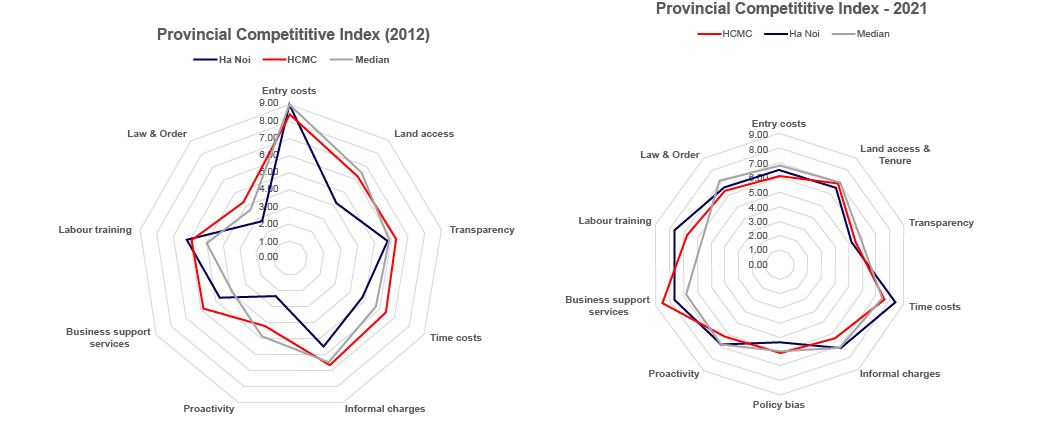It is worth noting that while these constraints present challenges, there are also opportunities for improvement.
HCMC has the advantage of being one of the most digital-friendly areas in Southeast Asia. This digital readiness provides an avenue for implementing innovative digital solutions across various sectors. Leveraging technology to facilitate government-to-government, government-to-businesses, and government-to-people interactions can streamline processes, enhance efficiency, and improve service delivery.
Additionally, HCMC possesses an asset in its human capital, exceptionally skilled labour. However, the city faces limitations in land and infrastructure, which restrict the types of industries that can be developed. As a result, there has been a shift from traditional manufacturing to service-based industries within HCMC.
To capitalise on this shift and further upgrade human capital, focusing on nurturing high-tech workers is crucial. Investing in relevant training programs, fostering collaboration between educational institutions and businesses, and creating an environment conducive to innovation can help upgrade the skills and capabilities of the workforce.
To attract more investment inflows in higher-valued service-based industries, HCMC should prioritise deepening these sectors. Industries such as Information Technology Enabled Services (ITeS) and financial services, which are less space-sensitive, hold significant potential for growth. However, to compete globally for foreign direct investment in these industries, Vietnam must make strategic changes to its foreign investment and work permit policies. Aligning these policies with those of other Southeast Asian countries known for their attractiveness to investors can help lure more investment and stimulate the development of higher-valued services.
In conclusion, addressing HCMC’s constraints requires concerted efforts and strategic measures. The essential steps are to improve the quality of the business environment by streamlining administrative processes, enhancing transparency and accountability, and facilitating the ease of obtaining licenses and approvals.
Furthermore, leveraging HCMC’s digital readiness and investing in high-tech workers can contribute to the city’s growth and attract more investment in service-based industries. By adopting these measures, HCMC can position itself favourably in the changing geopolitical environment and become increasingly attractive to Western investors.
Story by: Dr Richard Ramsawak and Dr Bui Duy Tung, The Business School, RMIT Vietnam






